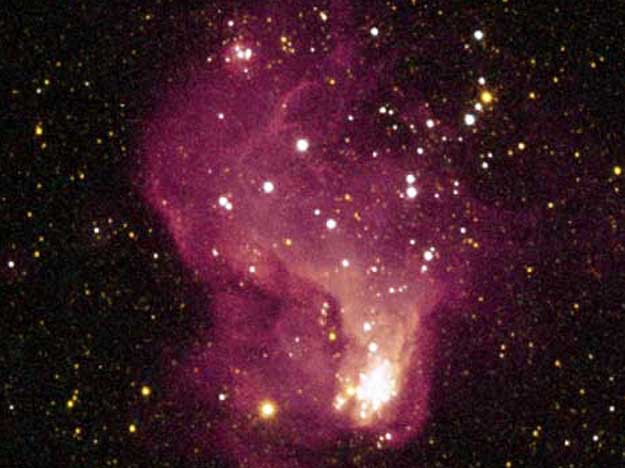Credit & Copyright: C. R. O'Dell
(Vanderbilt)
et al.,
L. Bianchi
(JHU)
et al.,
Hubble Heritage Team,
NASA
Explanation:
How did stars form in the early universe?
Astronomers are gaining insight by studying
NGC 6822, a nearby galaxy classified as
irregular by modern standards but appearing more typical of
galaxies billions of years ago.
Inspection of NGC 6822 shows several bright star groups,
including two dubbed
Hubble-X and Hubble-V.
Pictured above, the
Hubble Space Telescope has resolved
Hubble V into the energetic stars
that are lighting up the surrounding gas.
Each star in the central dense knot of
Hubble V shines brighter than 100,000
Suns.
The Hubble V gas cloud spans about 200
light years and lies about 1.5 million light-years away toward the
constellation
Sagittarius.
1999 2000 2001 2002 2003 2004 2005 2006 2007 2008 2009 2010 2011 2012 2013 2014 2015 2016 2017 2018 2019 2020 2021 2022 2023 2024 2025 |
Январь Февраль Март Апрель Май Июнь Июль Август Сентябрь Октябрь Ноябрь Декабрь |
NASA Web Site Statements, Warnings, and Disclaimers
NASA Official: Jay Norris. Specific rights apply.
A service of: LHEA at NASA / GSFC
& Michigan Tech. U.
|
Публикации с ключевыми словами:
Хаббл-V - звездообразование - Области звездообразования - Hubble V - NGC 6822 - star formation
Публикации со словами: Хаббл-V - звездообразование - Области звездообразования - Hubble V - NGC 6822 - star formation | |
См. также:
Все публикации на ту же тему >> | |
